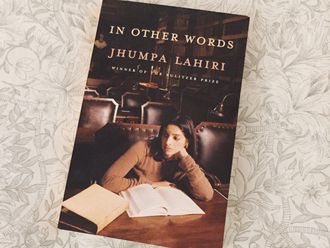
In the city where I live, a college for women recently laid down a strict dress code which antagonised the students as well as some of their parents. I can understand the strong reaction, having studied in convent schools where one had to obey rules regarding uniform such as the length of the skirt or dress. In one school, undergarments such as bloomers were also specified.
There were random checks and being caught meant being pulled up at assembly, which was not the most comfortable feeling. In yet another school the hair had to be braided if it was a certain length and then the plaits had to be looped again and then tied. Our parents never objected to these archaic rules and might even have been secretly pleased that their daughters’ modesty was being so well protected.
But once we finished with school and entered college, we looked forward to the freedom of being liberated from the uniform and wearing what we considered was trendy. The college which was in the news recently suddenly came down on students wearing what the management considered inappropriate clothing. One fine day, the students were told that they must wear kurtis or long tops over jeans, and around 30 students were stopped at the gate and not allowed inside. A few of these said they were not allowed to enter the premises as their kurtis were a few inches above the knee!
Draconian rules
What exacerbated the situation was the claim by some girls that even the lecturers started giving them pep talks on culture and morality, which made matters worse. About a 100 students staged a protest against what they considered draconian rules. The principal later said that this dress code had always been there and it was being enforced now because many students had begun wearing clothes such as cropped tops and torn jeans which was inappropriate.
As the debate raged on, the students argued that at the time of admission, the prospectus only said that they could wear salwar kameez or long tops with jeans. They were also made to sign an undertaking that they would not wear sleeveless tops. But nowhere was it specified that they had to wear kurtis below the knees and with long sleeves.
This is the age when these young women can carry off clothes that older people might think twice about wearing. You are young only once and this is the time when you can afford to keep up with the latest fashion without looking like a total misfit
Having studied at this very same institution some decades ago, I tried to recall if such a dress code existed then and I could not remember anyone being pulled up for wearing something that offended the sensibilities of the staff or principal. I knew that the lecturers then were advised not to wear sleeveless sari blouses.
Anyway, while it might seem like a storm in a teacup for some, I think there are larger issues at play here. While students view this diktat as reflective of a medieval mindset, the authorities feel very strongly that decorum must be maintained. To me the rules seem rather out-dated and out of sync with the times.
This is the age when these young women can carry off clothes that older people might think twice about wearing. You are young only once and this is the time when you can afford to keep up with the latest fashion without looking like a total misfit.
I am happy to report that as the students refused to back down, eventually the management took a step back and withdrew the controversial dress code.
We have to take cognisance of the times we are living in and acknowledge that what we older people wore when we were young was also considered over the top by our parents. But they never came down hard on us or forbade us from wearing certain clothes except if we were visiting their friends maybe!
— Vanaja Rao is a freelance writer based in Hyderabad, India.











